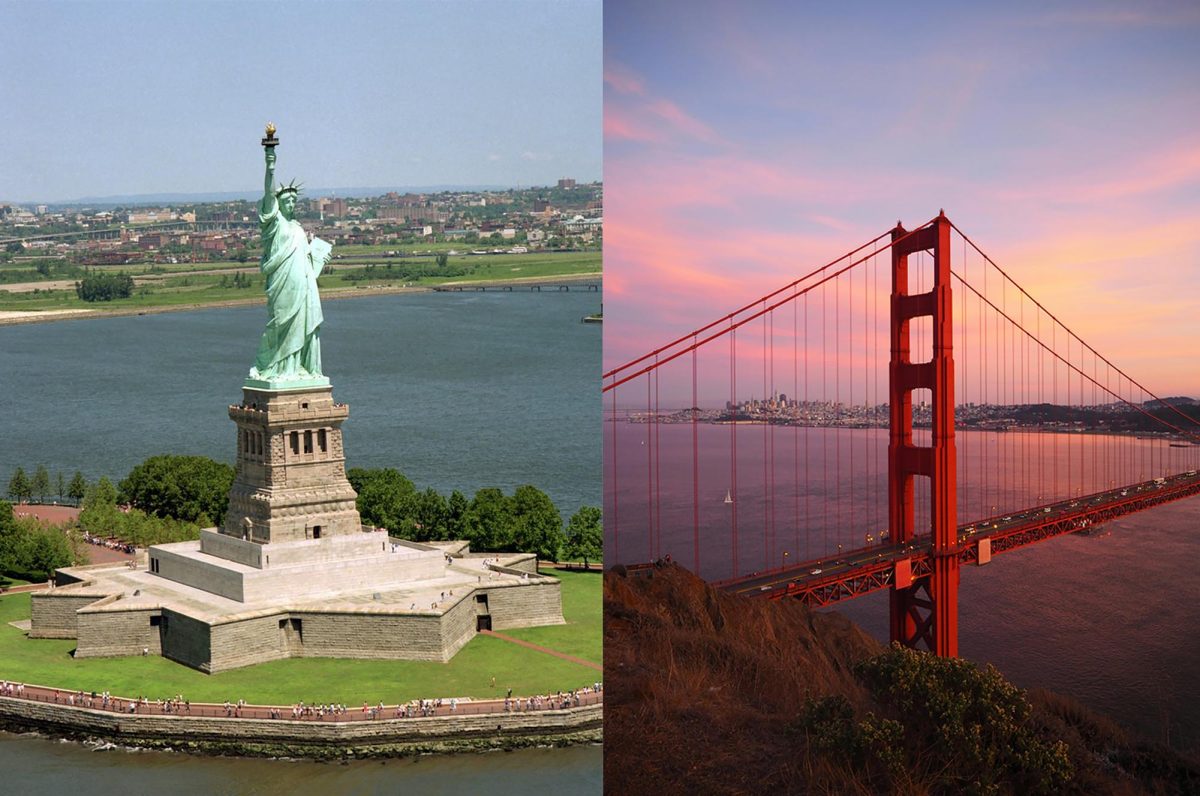At WHS, students and staff who have lived on both the West and East coasts recognize distinct cultural differences that shape daily life in each region. From personality and pace of life to food and political climate, many have strong opinions on which coast suits them best. For those who have experienced both, the contrast is unmistakable, whether it’s the way people interact, the political atmosphere, or even the availability of a good taco.
Lifestyle
West Coast: Many believe that the West coast presents a more relaxed approach to social interactions, where individuals often engage in friendly, easygoing conversation without the level of formality often observed in Massachusetts. People with familiarity with the West Coast, however, note that being more outgoing comes with some expectations for making the right impression.
“In LA, there’s always a pressure to be doing something interesting,” said English teacher Henry Moon, who transitioned from Los Angeles to Massachusetts. “That means that how interesting your activities are are a reflection of you and your status.”
East Coast: In contrast, East Coasters are known for their confidence, never shying away from standing out and expressing themselves without worrying as much about how they are perceived. Those who live in this area are very familiar with this tendency.
“Everyone in Boston, at least in my experience, has been different from anyone I’ve met elsewhere, but they express their differences proudly and confidently, so they are loud, but they are their own loud,” said sophomore Devel Moore.
Cultural Diversity
West Coast: One defining characteristic of West Coast culture is its diversity, which influences everything from daily life to career opportunities. Some believe that the region is home to a vibrant mix of ethnicities and perspectives, particularly in urban areas like San Francisco and Los Angeles.
“In the Bay Area, the cultural influence was huge,” said sophomore Sammie Waxman. “It was reflected in the food, festivals, and even the way people interacted—it felt like a true melting pot.”
East Coast: Unlike the West Coast’s fluidity within its culture, the East Coast’s diversity is deeply rooted in its traditions.
“The Northeast definitely has a focus on the celebration of different ethnic groups. NYC, for example, has the world’s largest St. Patrick’s Day parade,” history teacher Sean Smith said. “Harlem has been a significant epicenter of African American history and culture for more than a decade.”
Politics
West Coast: Political views vary across the country, and many express the external factors which can influence change in these opinions.
“Both states are pretty liberal in their politics, but the sheer size of California lends itself to more variety of ideas, sometimes to its detriment,” said Moon. “Los Angelenos are all about raising awareness about things, and while that’s important to Massachusetts residents as well, MA folk also put a premium on actions taken as a result.”
East Coast: On the East Coast, diversity shapes daily life, ingrained not in just culture but also the various political perspectives of its communities.
“I was going to say that we, as the East Coast, tend to lean a lot more left with our views, which may be influenced by our diversity,” said Moore. “Due to the fact that we have a wide range of backgrounds, the way we engage with important political matters often match up with our progressive policies.”
Food
West Coast: California’s food culture is deeply influenced by its extensive agriculture industry and cultural diversity. Unlike the traditional, butter-heavy dishes of New England, California cuisine leans toward fresh produce and innovative types of dishes, some of which highlight the farm-to-table movement.
“The Bay Area’s food culture was much more health-conscious, with lighter options and a focus on whole foods,” said Waxman.
Another staple of West Coast cuisine is its deep-rooted Mexican food culture, something that many believe people in New England miss out on.
“If I could bring one thing from the West Coast to the East Coast, it would be the authentic Mexican food.” said Moon.
East Coast: The East Coast food culture is rooted in rich flavors, often a reflection of its coastal influence.
“In New England, where seafood has a strong presence, the food here tends to be on the heavier side just because of the ingredients used, and more traditional dishes such as lobster and Boston cream pie are made with large amounts of cream and butter,” said Waxman. “The foods in Massachusetts tend to be more ‘classic and traditional’ versus California where there is more fusion and health-conscious based food.”



